A different take on creativity
This is not a love song. This is not a love song. With apologies to Johnny Rotten, this is not another blog about creativity promoting the message “if only you were more like ______” (complete the sentence with your preferred media friendly successful person).
This is not about determining which psychological traits are associated with creativity. It is about the role of memory in creativity. Why? Because
a) it turns out that memory is the most important element in creativity;
b) we all have a memory, so we all have the potential to be creative
c) because our individual memories are unique we vary in how creative we can be in particular areas
d) because memory is rarely considered in creativity and so writing about it seems a suitably divergent (creative) thing to do; and finally
e) because this cognitive approach forms the basis for my practical model of creativity called Beyond Personal Mastery®.
Remembering how to be creative
“Creativity is just connecting things. When you ask creative people how they did something, they feel a little guilty because they didn’t really do it, they just saw something. It seemed obvious to them after a while. That’s because they were able to connect experiences they’ve had and synthesize new things. And the reason they were able to do that was that they’ve had more experiences or they have thought more about their experiences than other people.” Steve Jobs Wired Magazine, 2004
As Jobs points out, creativity involves making links between what we are currently thinking of and other experiences we have previously had. Creativity requires memory. This obvious point about creativity is largely overlooked in most treatments of the subject that favor considerations of psychological traits (e.g. Csíkszentmihályi, 1997) or the environments that promote creativity (e.g. Pink, 2005; Robinson, 2009).
Focussing on characteristics and environments that promote creativity has resulted in a plethora of studies and stories that look at creative people and attempt to draw conclusions about their traits, ways or worlds. Like much of the self-improvement literature, the conclusions are limited by a failure to study the uncreative to see if they possess similar characteristics to the creatives or share similar environments.
Looking at the cognitive processes involved in creativity provides a different perspective that offers the promise of revealing processes that are involved in being creative. So understanding memory may provide a key to being creative.
We are our memories. Our very identity is closely bound up in what we bring to mind. Retrograde amnesia – the failure to recall from memory past events – can be accompanied by a loss of a sense of identity. The relationship between identity and memory is clearly illustrated by the case of Benjamin Kyle.
The Curious Case of Benjamin
On August 31, 2004, a man was found behind Burger King near Interstate 95 and Highway 17 in Richmond Hill, Georgia. Burger King employers found him lying on the ground by the Burger King dumpsters. Police who searched the scene found nothing to identify the man such as clothes or a wallet. Paramedics reported that there were indications that he had suffered blows by a blunt object. He had no memory of who he was, and displayed prosopagnosia (inability to recognize his own face). Known by the initials BK (for Burger King) he now lives using the name Benjamin Kyle.
To this day, Benjamin is able to recall only sketchy details of his past, such as public debates about construction projects in Denver and more detailed memories about restaurant operation and food preparation.
Benjamin’s case underlines how we use memory in everyday life for everything from being to answer the profound “who am I” question to knowing what a knife and fork are for. It is not surprising then that memory plays a central role in creativity. But we need to understand what we mean by creativity to understand the role memory plays in it.
Creativity Defined
Creativity is generally agreed to involve the production of something novel and worthwhile (e.g. Mumford, 2003). It is not necessary for us to get bogged down in what counts as novel or worthwhile. Suffice to say that consensus on these points is subject to change over time and differs between judges. For instance, the composer Bach was seen as a journeyman during his lifetime, but has subsequently been recognised as a genius. Nonetheless the basis for both Bach’s earlier and more recent reputation rests on whether he produced novel and worthwhile work.
Since both novelty and value are socially determined judgements as Csíkszentmihályi (1997) points out, we must look for memory processes that lead to ideas that may be contenders for the appellation of creativity, ideas in of themselves cannot be “creative”.
Creativity is also generally agreed to involve connecting existing ideas, things, or processes to create the novel and worthwhile thing (e.g. Jobs, 2004). This is where memory plays a role, in the process of making the links between the new and the old, or even the old and the old.
Working Memory and Long Term Memory
The memory processes that are likely to be involved in creativity are working memory (Baddeley, 2007) and instance-based long-term memory (e.g. Hintzman, 1986). Working memory for our purposes can be seen as the current contents of consciousness. It stores information that we are currently aware of and using. Working memory is very limited in its capacity, and is able to store generally about the last 2 minutes worth of information. After that the information is lost (forgotten) or is encoded into long-term memory. It is for this reason why long-term memory is so important for identity, because all of us, in a sense are living in our pasts. We need to continually recall information from long-term memory just to operate.
Long Term memory can be thought of as a storehouse of our experiences. In episodic models of memory such as Douglas Hintzman’s MINERVA model, long term memory is said to be made up of a series of memory traces that reflect the episodes that we have experienced. Thus if we see a black car, next to a fragrant gardenia bush on a sunny day when we are planning to go sailing with our friend David, our memory for that moment is stored in a trace that contains all of these elements (ie black, car, David, sailing, gardenias, the smell, sunshine etc). See this movie animation here
[quicktime]http://www.brightandassociates.com.au/wordpress/wp-content/uploads/2011/01/Episodic-Long-Term-Memory.mov[/quicktime]
In this way our long term memory comprises billions of traces encoding all of this experience. When we come to recall something, we probe our memories perhaps looking for gardenia experiences. The probes are a bit like a depth sounder sending a wave down through the layers of memories looking for an echo back from a matching memory. The strongest echo is the memory that is likely to be recalled. Because memories are subject to degradation over time if they are not regularly recalled (“rehearsed”), the strongest echo may come back from a different memory that nonetheless shares some element in common with the probe such as a memory of buying a gardenia plant at a nursery, or a memory of weeding the garden.
In the video below, a new instance/experience/inspiration acts as a probe of Long Term Memory. All of the different elements of the new instance are represented by the balls that probe into the Long Term Memory. When these probes hit a match, they bounce back up high (or echo strongly in Hintzman’s terms), balls that roll off without bouncing much are the probes that fail to find a match in memory. The stored memory that causes the most bounces or echoes, is the one that is most likely to be recalled into Working Memory.
[quicktime]http://www.brightandassociates.com.au/wordpress/wp-content/uploads/2011/01/Hintzman-recall-iPhone.m4v[/quicktime]
Creativity as linking memories and experiences
These memory systems give us a mechanism to make the links between a current memory residing in working memory and a stored memory trace in long term memory.
If we use the current experience in working memory as a probe of our long term memory, we can bring to mind two things in consciousness at the same time and that allows us to make the link and then store a new memory that is the composite of the new experience and the old memory. The same mechanism explains the power of reflection in learning as it allows us to recall a previously stored memory and then use that to probe for other stored memories and then link those together in a new memory.
In the video below, a new experience / inspiration in working memory (the green layer), leads to the recall into working memory of a previously stored memory (the red layer). These are combined and result in a new idea (the yellow layer), and all three memories are re-stored in Long Term Memory.
[quicktime]http://www.brightandassociates.com.au/wordpress/wp-content/uploads/2011/01/Hintzman-combine-and-adding-iPhone.m4v[/quicktime]
Several implications flow from seeing creativity in these terms.
- The more experiences you commit to memory, the more building blocks you possess to make different links. The more links the greater the chance of being creative
- The more richly encoded are experiences are (the more we process the patterns and elements of our experience) the more accessible these memories become for later recollection and linking. The more richly encoded the greater the chance of being creative.
- The more that experiences are recalled, rehearsed and practised, the more available they will be for subsequent recollection and linking. The more rehearsed the more creative.
- Paradoxically, the more rehearsed the memories, the more likely they will be compiled or chunked together with other very similar memories. This is great for expert snap judgements, but can dominate to such an extent, that it precludes creative alternatives.
Essentially, this is the cognitive mechanism the underpins the Combining and Adding step in the Beyond Personal Mastery® model of creativity.
Implicit Creativity – why confidence, risk taking and persistence are important for creativity
Like Peter McGeorge and Mike Burton (McGeorge & Burton, 1990) before me I used Hintzman’s model in my PhD (e.g. Bright & Burton, 1994) to explain a fascinating situation where people appear to make links between different stimuli without being apparently aware that they’ve made the links.
I showed people a series of clock faces. The clock faces had different designs. The shapes of the clock faces were either circular; square; diamond shaped or triangular. The numbering system was either arabic numerals; roman numerals; lines at 12, 3, 6 and 9 o’clock; or totally blank faces.
I then showed people 30 different clock faces that varied in their design features. I asked people to rate each clock for how well it represented the time shown. I didn’t tell my volunteers or draw attention to the fact that every clock had a time showing that fell between six and twelve o’clock.
After they were done, I removed the clock designs from view, and surprised my volunteers by giving them a memory test. I presented them with two clock faces at a time, and told them they had seen one, but not the other of each pair. The volunteers had to choose the one they’d seen before. Often this test generated howls of protest with people stating that they couldn’t remember the clocks and were just guessing.
I’d fixed the test so that one of each pair showed a time that fell between six and twelve o’clock and the other clock did not. However even the clock that showed a time in the same range as the earlier clocks had a specific time that had not been seen before. For instance, if the volunteers had seen 6:35 earlier, they might be shown 6:50 during the test.
It turns out that people typically picked the clocks that showed the times that were consistent with the previous ones they’d seen (about 7 times out of 10, compared to 5 out of ten if they were truly guessing).
What I’d done was to get people to lay down 30 memory traces that all contained features of the the clocks including the time shown on the clocks (even though they were not particularly focussed on the time shown). Then at test, they compared the two alternative clocks to their previously stored instances. The clock that got the biggest echo back was the one most like what they’d seen before – which was the one showing a time in the same range as the ones they’d stored in memory.
The volunteers were able to make the links between the novel clocks and their stored memories to make a decision even when they were unaware they had the knowledge to make the decision.
We store more information than we are readily consciously aware of. This allows us to respond to new stimuli and automatically link them to our memories even when we are not confident we can make the links. Once my volunteers were told of the time ranges they rapidly understood what was happening.
Subsequent studies by my PhD student Ben Newell (Newell & Bright, 2002) indicated that the volunteers actually did have some insight into their choices, but they were not very confident in their choices. So people are naturally good at making the links, but often they are reluctant to try to make the links or not confident that they can do so. I think this helps to explain why creativity is so regularly associated with qualities such as Self Efficacy, Risk Taking, Playfulness and Persistence (all steps in Beyond Personal Mastery®). People need to be either naturally confident, risk takers or stubbornly persistent, or they need encouragement and an encouraging environment to help them make the links and work with that they’ve linked together.
10 tips for boosting creativity
- Have a good memory. This model shows us that having a good memory is likely to be helpful in being creative, because it allows us to bring to working memory more stored stored memories, and that increases the chances of making links that might be novel and worthwhile.
- Have lots of memories or experiences. It stands to reason that the more memories that are laid down and accessible, the more different combinations can be made between them and with new memories. This is why the Inspiration step in Beyond Personal Mastery® is so important. It underlines that old adage, you should get out more often, read more often, experience more often, reflect more often. It is also consistent with the idea that many creative people have many thousands of hours of experience in their chosen domain. It is consistent with the 10,000 hours hypothesis for creativity.
- Encode your memories richly by being aware of and examining the patterns they contain. As you experience things, actively look for patterns and try to associate the experience with other experiences. Think about what you are experiencing in many different ways. For instance you could consider your experience in terms of deBono’s different thinking hats (information, feeling, judgement, optimism, alternatives, meta cognition). What you are doing is adding lots of different “tags” or elements to your memory that will make it more accessible to recall in the future by a wider range of probes. In turn this increases the chances of this memory being linked to something ostensibly quite different in the future and hence increases the likelihood of creative thinking. This is why the Patterning step in Beyond Personal Mastery® is so important.
- Reflect on your memories and link them to existing categories, or create new ones if they do not readily fit. This is the Learning step in Beyond Personal Mastery®.
- Be aware of the expertise effect (e.g. See Blink by Malcolm Gladwell). Too many similar memories – such as acquired becoming expert in some endeavor are likely to be very dominant and will quickly be recollected. This is known as the Chunking effect in memory studies of expertise. For instance Chess experts have been shown not to analyse a chess board piece by piece, but rather chunks the arrangement of pieces together into a pattern. This is great for expertise because it allows for very fast retrieval and processing of one pattern rather than many individual components, but it can stymie creativity because it can limit the number of new or novel associations that you can make. In social situations like brainstorming, it can lead to stereotypical and unoriginal ideas.
- Overcome the expertise effect by: encouraging adusrdism – forcing yourself to consider links between seemingly unrelated ideas.
- Force yourself to consider individual elements in a situation rather than chunking stuff together – step back from the scene, to see the bigger picture, look sideways at the situation
- Using humor such as caricatures, parody, satire, and exaggeration as mechanisms to make new links
- Using the Arts (e.g. Music, poetry, plays, film, painting, sculpture etc) as ways of finding new associations and links to memories.
- Adopt a mind-set that is consistent Nickerson (1999) and with the Mind Steps of Beyond Personal Mastery® – i.e. Open, Flexible, Optimistic, Playful & Risk-taking, Persistent, Self-Efficacious & Visionary. These attitudinal factors are likely to increase the chances of seeking out new inspirations to become memories which enhance the chances of making new associations, and recalling and combining new and old memories in novel ways.
- Children are often seen as naturally creative. It is likely that this results from a combination of necessity and nurture.
- Children have fewer encoded memories, and therefore when they recall and link things together, the links are likely to seem less natural, or more forced, and therefore sometimes goofy and sometimes highly creative. Necessity is the mother of invention. One implication of this is that injunctions to adults to think like a child are unlikely to be successful because the resulting behavior may mimic childish attitudes, but will not mimic children’s smaller store of long term memories. However it does suggest that too many memories can hinder creativity, unless one actively masters techniques to prevent automatic encoding of new material along stereotypical lines (ie in the way that all the previous memories have been stored). This is why coming to things with “fresh eyes”, “sleeping on a problem”, possibility as well as probability thinking (Pryor, Amundson & Bright, 2008) or using metaphors (see Amundson, 2010) can be so powerful.
- Children are nurtured and encouraged to be curious, to experiment, and to fail. The consequences of failure are downplayed and they are generally in environments where the consequences of failure are not severe. In fact parents naturally encourage the sort of conditions that Nickerson (1999), Bright (2008), and Pryor & Bright (2009) consider essential for creativity.
- The Beyond Personal Mastery® model of creativity was developed based on the research cited here and more generally fits within the Chaos Theory of Careers (e.g. Pryor & Bright, 2011). The implications of the model are to take Action steps to get as many inspirations as possible and then to encode these richly taking into account the patterns these experiences hold, and to reflect on these patterns and learn new ways of encoding our experience. Then practice reproducing the experience from our memories to master them, and then once richly encoded, learned and mastered to combine them with other experiences to create new ones. In this act of Combining and Adding, we can have those “aha” moments of insight where a solution to problem presents itself, or where a new creative idea emerges. It is from this that we can then set about the tasks of strategizing, goal setting and finally execution. The model is useful because it shows that there are a lot of important steps to go through before we reach the goal setting and strategizing stages.
- Too often commentators, counsellors and coaches jump in at the goal setting or strategizing stage in the mistaken belief that this will lead to the creative step. In fact, the creative step comes first. This is an important consideration, especially around New Year, when we are assailed by lots of well meaning advice encouraging us to set goals and strategies. It assumes we already have sufficient experiences and memories to create attractive, useful or realistic goals. However for many, ignoring the first five steps of Beyond Personal Mastery® are likely to condemn them to limited, unoriginal and unsatisfying goals and plans which in turn are probably more likely to falter.
- To be creative, do lots of things, reflect and learn from those things and continually try combining the new with the old and the old with the old and even the new with the new. Foster your memory to foster creativity.
Remember we are all Creative
We all have memories and so we all have the apparatus to be creative. In fact in one sense we are all creative all of the time. However much of our creativity is overlooked, or focussed on things that society does not currently place a high value upon (but recall Bach, you never know, your creative lists of train spotting numbers could be the celebrated fugues of the 22nd century, but then again perhaps not!!).
A lot of our creativity is stymied by our lack of confidence, persistence, or lack of risk-taking. These Mind steps of Beyond Personal Mastery® are important not only in the creative act in the first place, but also in transforming the creative idea into an innovation. This article has focussed on the creative act and not the innovative act – which is the transforming of creative ideas into useful products or services. However I encourage the reader to check out Beyond Personal Mastery® where it should be apparent that the model applies to the Innovation process as well. Remember you just need to make the links!
References
Amundson, N. (2010). Metaphor making. Ergon Press.
Baddeley, A. (2007). Working Memory, Thought, and Action. Oxfrod University Press, USA.
Bright, J.E.H. & Burton, AM. (1994). Past midnight: semantic processing in an implicit learning task. Quarterly Journal of Experimental Psychology. 47(1).71-89.
Bright, J. (2008). Beyond Personal Mastery®. Extracted from http://www.beyondpersonalmastery.com
Csíkszentmihályi, M. (1997) Creativity: Flow and the Psychology of Discovery and Invention. Harper Perennial
Duggan, W. (2007). Strategic Intuition:The creative spark in human achievement. Columbia University Press.
Gladwell, M. (2005). Blink: The Power of Thinking Without Thinking. Little, Brown & Company. USA.
Hintzman, D.L., 1986. “Schema abstraction” in a multiple-trace memory model. Psychological Review 93, pp. 411–428.
Jobs, S. (2004). Interview in Wired Magazine
McGeorge, P., & Burton, A.M. (1990). Semantic processing in an incidental learning task. Quarterly Journal of. Experimental Psychology, 42A, 597–609
Mumford, M. D. (2003). Where have we been, where are we going? Taking stock in creativity research. Creativity Research Journal, 15, 107–120.
Newell, B.R & Bright, JEH. Well past midnight: Calling time on implicit invariant learning? European Journal of Cognitive Psychology, 2002, 14 (2), 185–205
Nickerson, R. S. (1999). “Enhancing creativity”. In R. J. Sternberg. Handbook of Creativity. Cambridge University
Pink, D. (2005). A whole new mind. Allen & Unwin.
Pryor R.G.L., Amundson, N., & Bright, J. (2008). Possibilities and probabilities: the role of chaos theory. Career Development Quarterly 56 (4), 309-318.
Pryor, RGL & Bright, JEH (2009). Failing Successfully. Presentation to the Career Development Association of Australia Annual Conference, April 2008, Melbourne.
Pryor, RGL & Bright, JEH. (2011). The Chaos Theory of Careers. Routledge. New York.
Robinson, K. (2009). The Element: How Finding Your Passion Changes Everything. Viking.
Related Posts

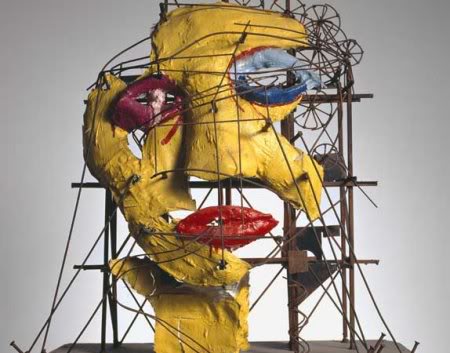
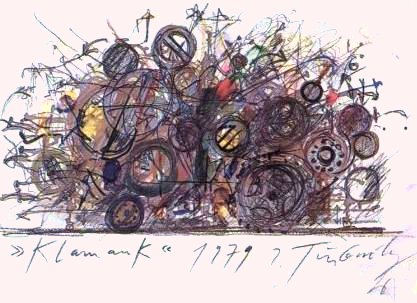
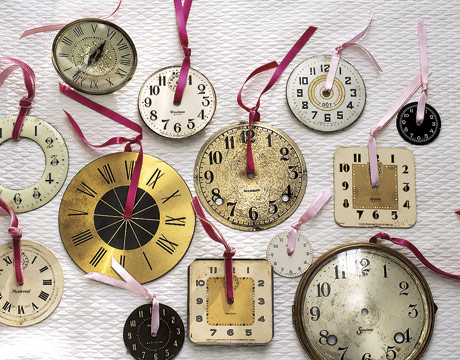
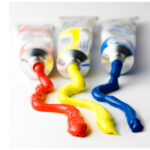
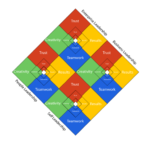
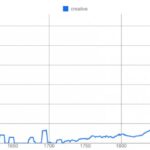

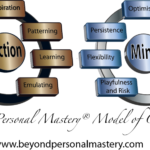

Pingback: Tweets that mention Remembering: how to be creative | The Factory -- Topsy.com
Pingback: Inspiration - the first step into creativity | The Factory